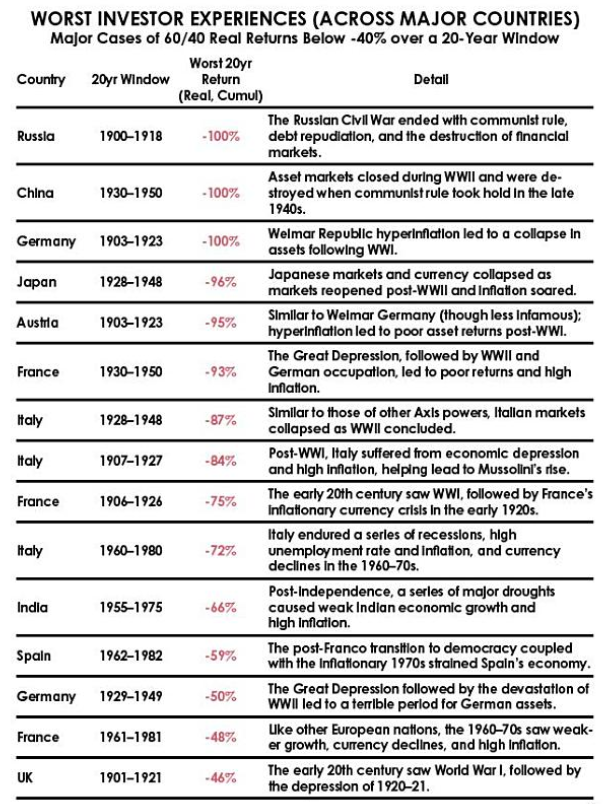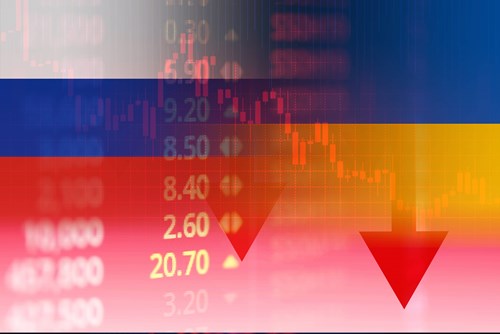While significant for being the first storm ETFs were not able to weather, history shows Russia’s invasion of Ukraine is just one of many instances where conflict has created disruption for market participants.
The MOEX Russia index fell as much as 43.6% in a single week in February before the Moscow Exchange suspended trading.
ETFs then briefly assumed their much-touted role as tools for price discovery during periods of market disturbance, only for Russia ETFs to suspend trading a short time later as liquidity vanished. Russian securities were also removed from other more diversified products such as emerging market benchmarks.
Responding to the situation, BlackRock chairman and CEO Larry Fink said the invasion of Ukraine has “upended the world order that has been in place since the end of the Cold War” and will have far-reaching consequences that will “reverberate for decades”.
While this sounds dramatic on first impression, Fink makes a valid point about not just the initial shock of military and political unrest on markets but the longer-term effect on markets and monetary policymaking.
In fact, between 1900 and 1918, a 60/40 portfolio capturing exclusively Russian securities would have lost 100% of its value as a result of WWI coinciding with the Russian Civil War. This resulted in the Bolsheviks taking power, refusing to fulfil financial obligations – such as repayments on sovereign debt – and upending existing financial market infrastructure in the country.
In a similar turn of events, market closures during WWII were followed in China by Maoist communists taking power. The new governing order then presided over the unravelling of asset markets and -100% returns on 60/40 China-only portfolios during the two decades to 1950.
Other examples of single-country 60/40 portfolios going awry during periods of conflict include hyperinflation in the Weimar Republic leading to the destruction of assets and -100% returns between 1903 and 1923.
Likewise, a France-only 60/40 portfolio would have lost 93% of its value in real cumulative terms between 1930 and 1950, due to a combination of the Great Depression and Nazi occupation during WWII creating high inflation and poor returns.

Source: Ray Dalio, Principles for Dealing with the Changing World Order: Why Nations Succeed or Fail
Interestingly, Ray Dalio, co-CIO of the world’s largest hedge fund Bridgewater Associates, believes investors can learn how to weather these Black Swan events by looking back at similar examples through history.
“Over the last 50 years, in order to handle my responsibilities well, I have needed to understand the most important factors that go into making countries and their markets succeed and fail,” Dalio said in the introduction to his recent book.
“I learned that to anticipate and handle situations that I had never faced before, I needed to study as many analogous historical cases as possible to understand the mechanics of how they transpired.”
He added while periods of peace are more enjoyable, periods of conflict create a “new beginning in the form a return to fundamentals on a sounder footing (albeit painfully)”. This includes a clearer view of where power resides and new monetary, economic and political systems.
While many academic investors rely on historical trends to base their investment convictions, many would still be rightfully hesitant about using predictions on geopolitics to guide their asset allocation.
Not only do most investors have geographical exposures beyond the countries directly involved in conflicts but trying to replicate market events that occurred in previous conflicts involves no small amount of trying to time when such events will play out (if at all) during ongoing conflicts.
One lesson which remains as true in the current scenario as in other disruptions is the importance of investor composure. At most, one might predict downturns present opportunities for diversified, long-term investors.
Related articles



